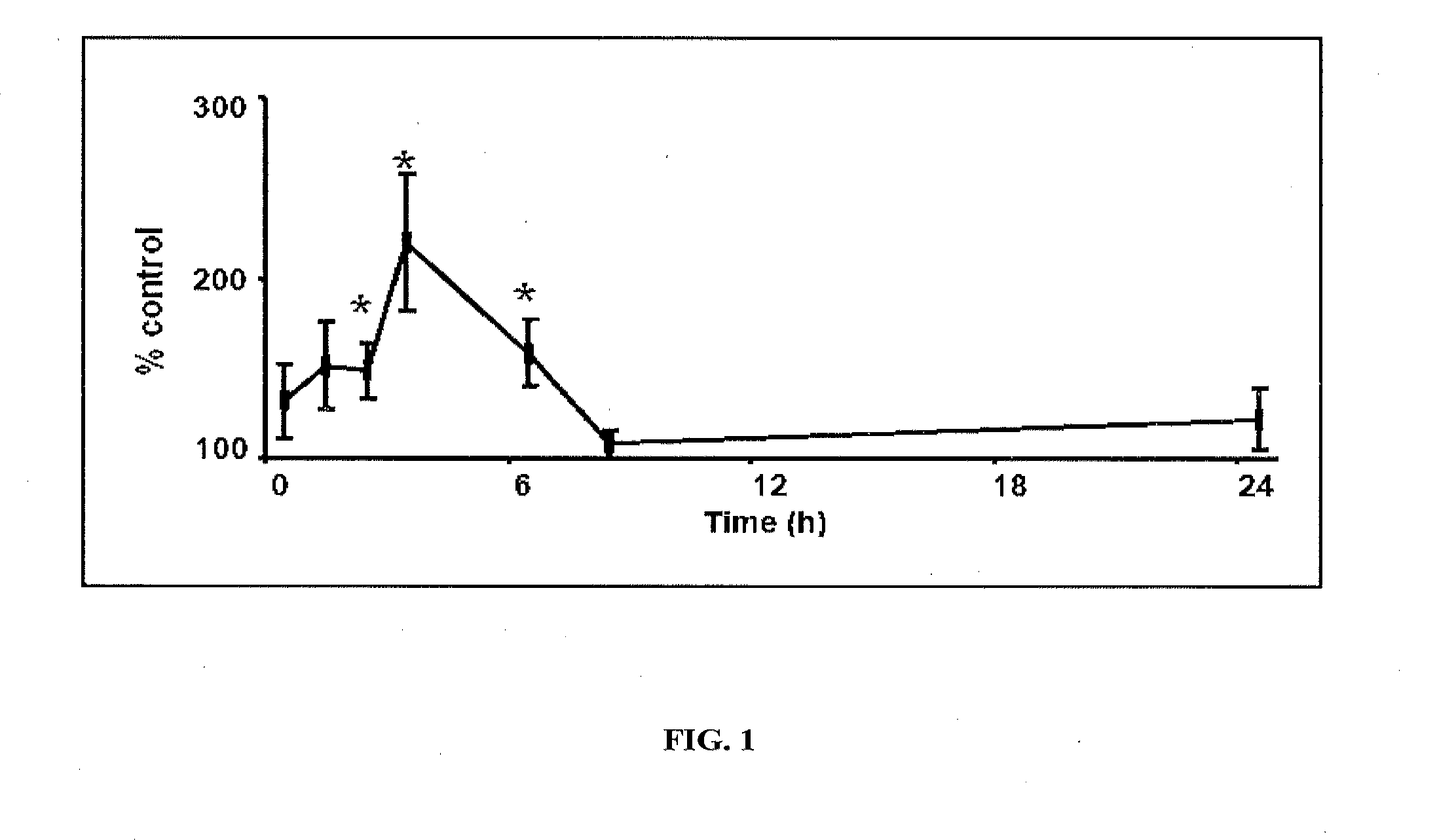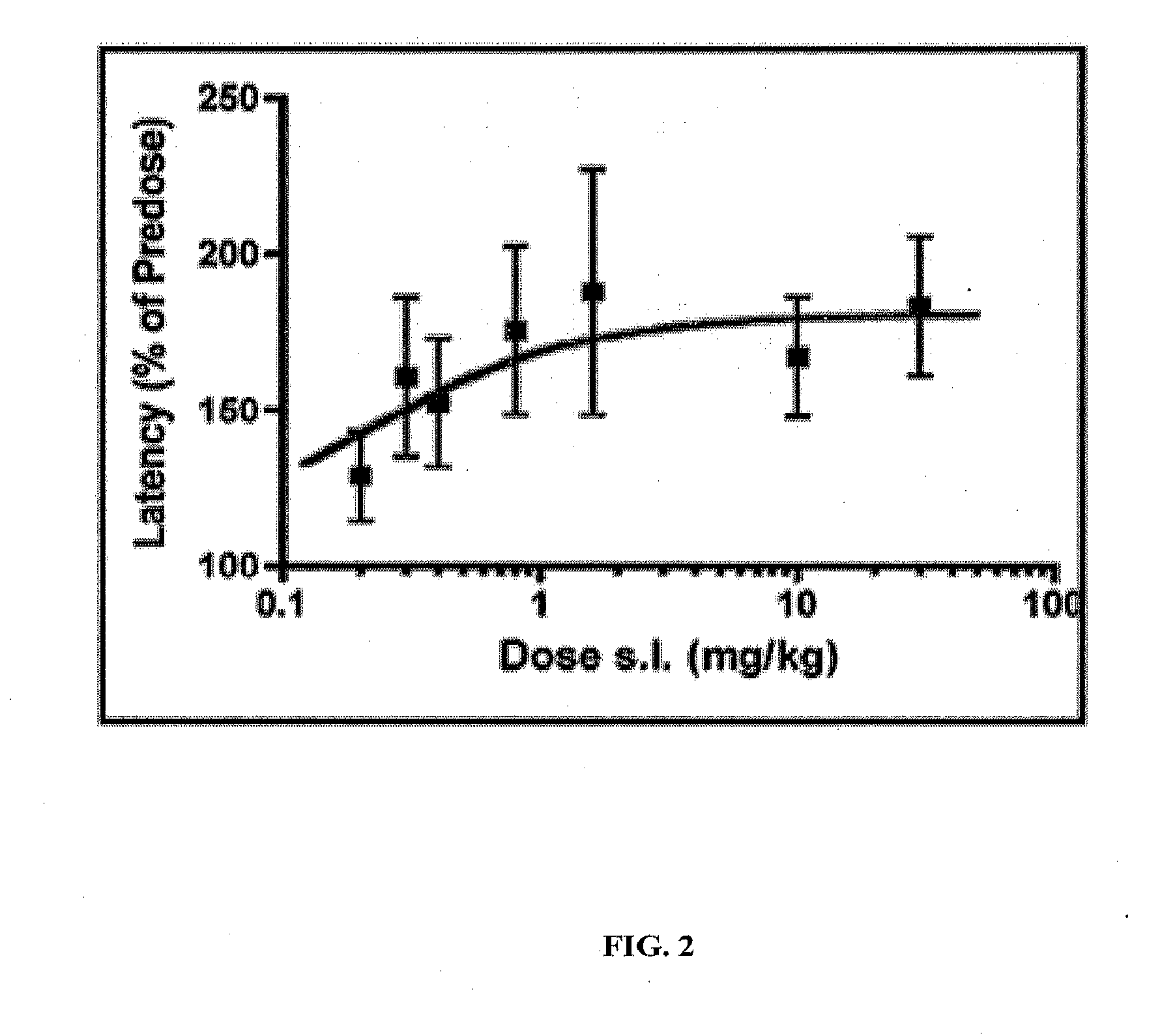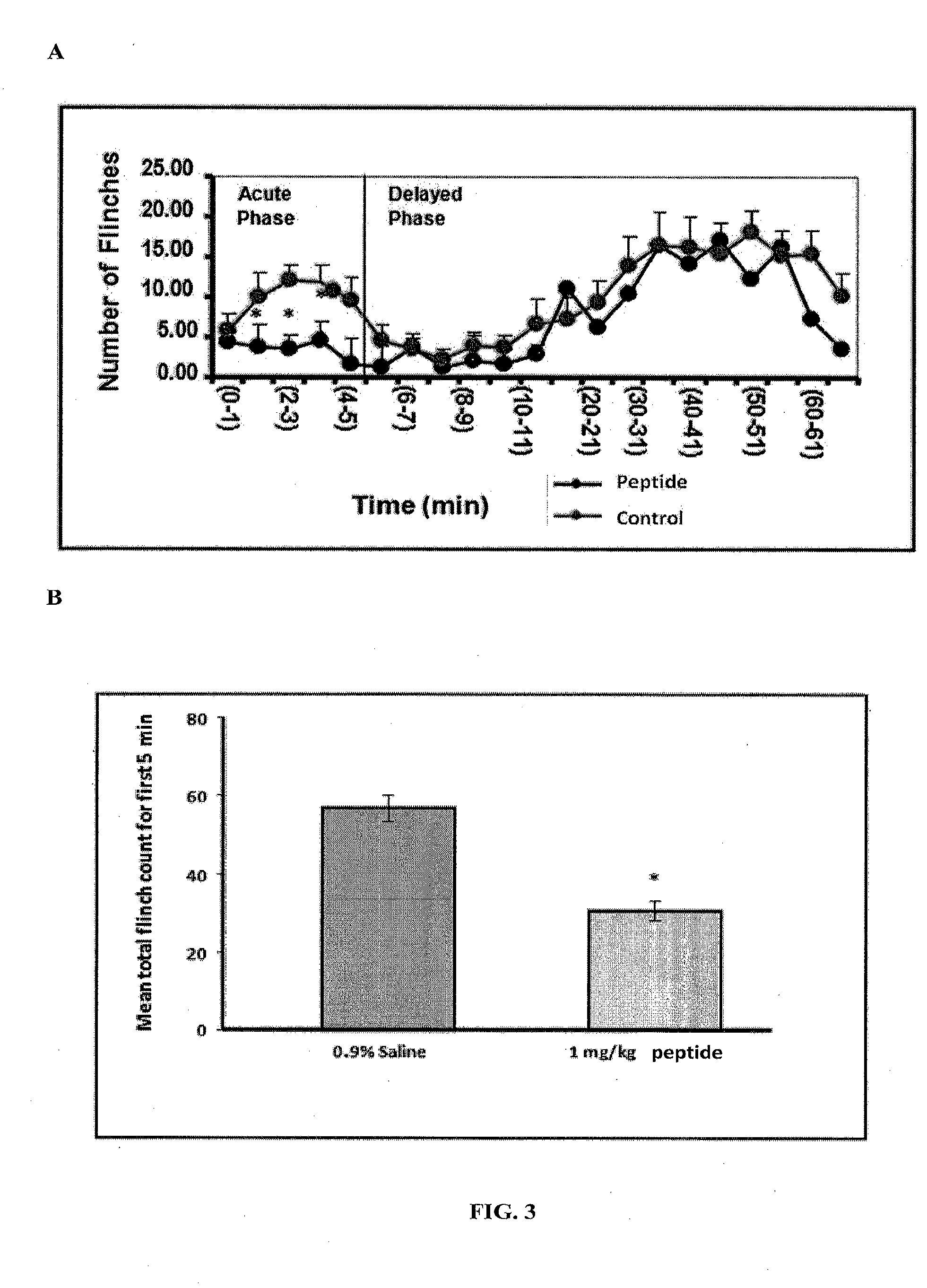Analgesic Composition for Transbuccal Administration
a technology of analgesic composition and transbuccal, which is applied in the field of analgesic composition for transbuccal administration, can solve the problems of inconvenient and unpleasant patient experience, inadequate management of pain, especially acute pain, and accompanied by anxiety, emotional distress and/or depression, so as to reduce the time, increase the surface area, and facilitate the use
- Summary
- Abstract
- Description
- Claims
- Application Information
AI Technical Summary
Benefits of technology
Problems solved by technology
Method used
Image
Examples
example 1
The Hot Plate Model
[0113]The hot plate model was used to evaluate the time and dose dependence of the antinociceptive effect of the peptide after sublingual administration. Different mice were used at each time point or dose. The peptide was dissolved on saline unless specified.
Methods:
[0114]Swiss albino mice (20-25 g, male) were placed on a hot-plate (55° C.) and confined by a circular transparent restrainer of 13 cm height and diameter. The response latency was measured from the time the mouse was placed on the hot-plate to the time it exhibited one of the following endpoints: licking of a paw, stomping of a limb, and jumping (defined as a momentary lifting of all 4 limbs off the hot-plate). Mice were tested before and at an appropriate time after drug administration. Statistical analysis was performed by paired t-test between pre-dose and post-dose latencies.
Results:
[0115]At a dose of 0.4 mg / kg after sublingual administration, the peptide exhibits significant antinociceptive effe...
example 2
The Acetic Acid-Induced Writhing Model
Methods:
[0118]Swiss albino mice (20-25 g, male) were administered with the peptide and at the appropriate post-dose time acetic acid (0.9% solution) was injected intraperitoneally (10 ml / kg). The mice were then placed in a transparent observer box and the total number of writhes per animal in the 15 min period after injection of acetic acid was recorded. A writhe is typically characterized by contractions of the abdominal musculature followed by extension of the hind limbs. Statistical comparison was done by either Student's t-test or one-way ANOVA.
[0119]At 1 h post administration time, acetic acid (0.9% solution) was injected intraperitoneally and the total number of writhes per animal was recorded, as described above. Upon completion of the experiment the animals were sacrificed and skull exposed. The accuracy of the injection was confirmed via injection of methyl-blue dye into the injection aperture left by the original injection. Only result...
example 3
The Formalin Model
Methods:
[0121]Sprague-Dawley rats (about 200 g, male) were sublingually administered with the peptide and at 1 h post-dose time a formalin solution (2.5%, 100 μl) was injected subcutaneously in the dorsal aspect of the right hind paws. Rats were then placed in a transparent observation box. Observations were made real time for 1 h by an observer. Simultaneously, video recording was also made with a camera mounted underneath the box. The number of flinches of the formalin-injected limb was recorded every minute for the first 10 min (the acute phase). Thereafter, flinches were recorded for the first min of every 5 min for the next 50 min (the delayed phase). The video recording was viewed later for confirmation of results. Statistical comparison was done by either Student's t-test or one-way ANOVA.
Results:
[0122]FIG. 3A shows that the peptide (1 mg / kg) significantly reduced the number of flinches of the formalin-injected hind limb compared to saline-treated controls i...
PUM
| Property | Measurement | Unit |
|---|---|---|
| molecular weight | aaaaa | aaaaa |
| molecular weight | aaaaa | aaaaa |
| molecular weight | aaaaa | aaaaa |
Abstract
Description
Claims
Application Information
 Login to View More
Login to View More - R&D
- Intellectual Property
- Life Sciences
- Materials
- Tech Scout
- Unparalleled Data Quality
- Higher Quality Content
- 60% Fewer Hallucinations
Browse by: Latest US Patents, China's latest patents, Technical Efficacy Thesaurus, Application Domain, Technology Topic, Popular Technical Reports.
© 2025 PatSnap. All rights reserved.Legal|Privacy policy|Modern Slavery Act Transparency Statement|Sitemap|About US| Contact US: help@patsnap.com



